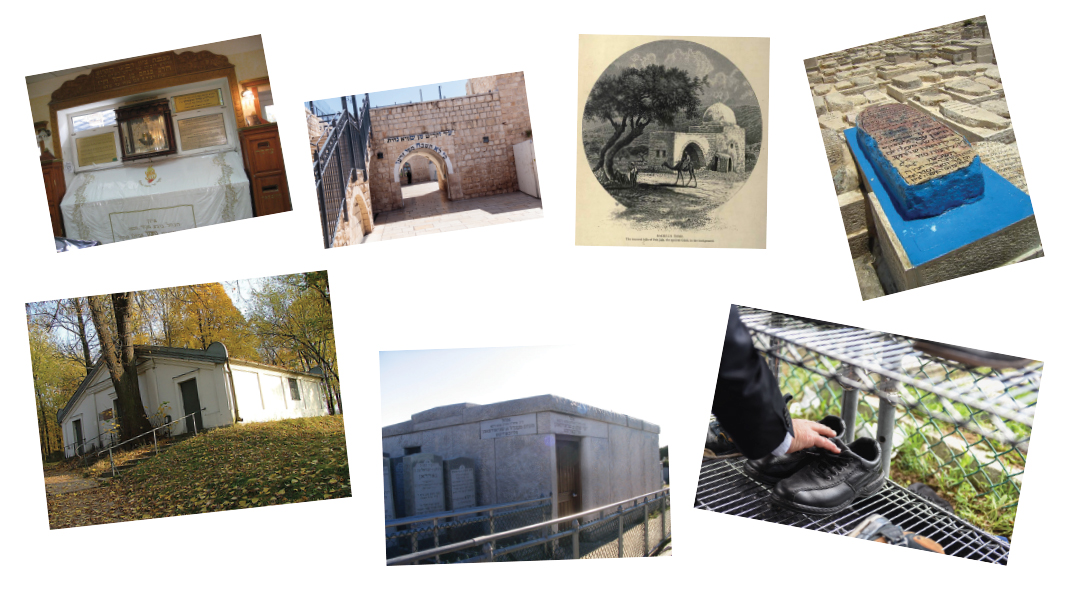Worth the Trip
| May 6, 2020A tzaddik is surrounded by the air of Gan Eden, so when you stand within daled amos (about six feet) of his tziyun, your tefillos go into the air of Gan Eden

Everyone in the city of Nizhyn, Ukraine, knew that if you needed a yeshuah, you went to the tziyun (gravesite) of the holy Rav Dov Ber of Lubavitch, son of the Baal HaTanya, to pray.
Everyone, that is, except for one of the wealthiest men in town. This man did not believe the miraculous tales of salvation that people related. Instead, he openly mocked them.
One day, this man’s young daughter became very sick. The greatest specialists could not find a cure. The gvir’s wife beseeched her husband to go and daven at the holy gravesite. “People come from far and wide to this tziyun, and we live so near. Why shouldn’t we try? Our daughter’s on her deathbed!”
But the stubborn man refused. “What? Me? The one who’s always laughing at these stupid believers? Definitely not!”
The child’s condition continued to deteriorate. She was hovering between life and death.
During that time, the wealthy man was called away on urgent business matters. Seizing the opportunity, his wife hastily hired a non-Jewish wagon driver and paid him to travel to a talmid chacham with instructions to buy candles, light them at the tziyun, and pray for her daughter’s recovery. After davening fervently, the talmid chacham went to check if there was any improvement in the girl’s condition. To his great joy, the child was already sitting up, talking, eating, and feeling much better.
A few days later, the gvir returned home. How happy he was to find his daughter running around! “You see!” he exclaimed triumphantly. “She recovered! Good thing I didn’t listen to you, otherwise you’d attribute her recovery to davening at the tziyun!”
His wife couldn’t contain herself and related all that had happened. Only after hearing the story confirmed by the talmid chacham and the driver, did the disbelieving father grudgingly acknowledged the tzaddik’s power.
Roots in the Torah
Why have so many Yidden throughout the generations gone to daven at the gravesites of tzaddikim? When did it all start?
The Torah records that Yaakov Avinu buried his wife Rachel on the way to Beis Lechem, and not in Chevron, so that years later when the Yidden would be exiled from Eretz Yisrael, they could daven at her gravesite.
Additionally, the Gemara (Sotah) relates that Kaleiv ben Yefuneh, one of the Meraglim sent to spy out the Land, went to Mearas Hamachpeilah in Chevron to daven to be protected from the Meraglim’s influence.
So we see that going to kivrei tzaddikim is a custom mentioned in the holy Torah.
Even after Their Deaths
But how can a tzaddik who is not alive anymore help us?
We all know that a tzaddik’s brachah or tefillah has tremendous power, but did you know that his power is even greater after his death? Freed from his physical limitations, a tzaddik can help us even more than when he was alive!
The Zohar explains that when there’s pain in the world, and people daven at kivrei tzaddikim, the tzaddikim turn to our Avos and Imahos in Chevron, and then all of them daven to Hashem to annul bad decrees and Hashem listens and has mercy on Klal Yisrael.
In fact, one of the reasons Hashem concealed Moshe Rabbeinu’s burial place from us is because He didn’t want us davening there after the Churban Beis Hamikdash, as his tefillos would have the power to annul the galus!
After a tzaddik’s passing, his nefesh (part of his neshamah) remains over his kever, which is why his tziyun is a holy site. In fact, when the Ari Hakadosh came to Tzfas, he was able to identify many of the previously unknown burial sites of famous tzaddikim by sensing the presence of each nefesh hovering over each place.
Interestingly, we do not visit kivrei tzaddikim (or any kever) on Shabbos, Yom Tov, or Rosh Chodesh, because then the nefesh of the tzaddik is not there; it ascends into higher worlds.
A tzaddik is surrounded by the air of Gan Eden, so when you stand within daled amos (about six feet) of his tziyun, your tefillos go into the air of Gan Eden. When the tzaddik has an aliyah, such as on Shabbos and Rosh Chodesh, all the tefillos rise with him.
Imagine what an impression it leaves on your neshamah to be enveloped with air from Gan Eden! Rav Dovid Shputz a”h, a Belzer chassid, related an interesting story about this. As a bochur, he longed to go to the tziyun of Rav Elimelech of Lizhensk. In Belz, bochurim weren’t encouraged to make special trips to kevarim, so he planned a stop in Lizhensk on his way from his home in Vienna to the shtetl of Belz for Rosh Hashanah. He reached Lizhensk on a Friday morning, and from there he traveled straight to Belz, arriving close to the start of Shabbos. He raced off to the beis medrash without saying a word to anyone. Later, the gabbai, Rav Nachman Hersh, cornered him.
“Shalom aleichem, bochur, did you just come from Lizhensk?”
A surprised Dovid asked how he knew. It turned out that earlier when he’d greeted the Rebbe, Rav Aharon ztz”l, the Rebbe had commented, “This bochur smells of Lizhensk….”
Oops! We could not locate your form.






